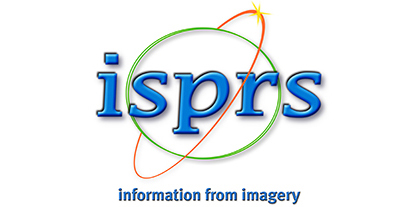
FIRST PLACE AWARD
MapBlender: Enabling Collaborative Cybercartography
Marius Hogräfer, Jens Emil Grønbæk, Jana Puschmann, Sebastian Krog Knudsen, Hans-Jörg Schulz
Computer Science Department, Aarhus University, Denmark
One of the challenges that GIS users in diverse, distributed teams face these days is being able to efficiently collaborate, both across workspaces and tools. To that end, we present MapBlender, a cybercartographic application that fosters geocollaboration by adapting a collaboration-first approach, placing users and their GIS tools on equal footing. MapBlender allows all connected users to share video feeds of their GIS tools and webcams, which can then be freely rearranged and re-sized, adopting simple and familiar interaction techniques from modern window managers. In addition, the rendering and translucency of these feeds can be adjusted, allowing users to align and analyze information across tools. We demonstrate the utility of MapBlender in a hybrid teaching scenario, wherein a representative of a software company uses our application to instruct co-located and remote learners from another company on the features of their GIS tool.
MapBlender is publicly available under open source licenses and runs in the browser, with no local installation necessary. Thus, with MapBlender in place, one of our goals is to promote an HCI perspective on future work in geocollaboration.
Demo video
Descriptive paper
https://agile-giss.copernicus.org/articles/3/37/2022/
Project website

SECOND PLACE AWARD
The StoryMap of the Evandro Case - The Creation of an Interactive True Crime Cartographic Narrative
Thomas Felipe de Lima, Prof. Dr. Silvana Philippi Camboim, Me. Jaqueline Alves Pisetta
Universidade Federal do Paraná
In 1992, Evandro Ramos Caetano disappeared in the small coastal town of Guaratuba in southern Brazil. His body was found disfigured five days later, without hair, eyes or entrails. Thus, it was soon suspected that he had been the victim of a macabre ritual. After months, police found seven suspects, including the mayor of Guaratuba's wife and daughter. They confessed they killed Evandro to achieve prosperity. However, soon after, they denied it, claiming they had been tortured into confessing. In 2018, Professor Ivan Mizanzuk began research for a podcast series and found new revelations that never made it into the case file. After the massive repercussion of his work, the defence of the seven accused requested a review of the case, which made this one of the most discussed criminal cases in Brazil. This aftermath shows how the recent interest in the True Crime genre has drawn attention to cases already considered closed. In this story, Guaratuba has a special protagonism. Developed by a Cartographic Engineering undergraduate student at UFPR, Brazil, this work creates an interactive narrative based on the hero's journey and other storytelling techniques to create an interactive map using only open source technologies. Each detail is designed to guide the reader through the story thread, represented in the map by a red string. This map aims to present the case and its peculiarities, the revelations discovered by the podcast, reconstruct the city's cartography in the 1990s and expose the current situation of missing persons in Brazil.
The application is available at: https://thomasflima.com
To translate it into English, use the left mouse button and click on "translate".
To view the features present in this system, watch the video available at the link: https://bit.ly/apresentacao_storymap_casoevandro

THIRD PLACE AWARD
Personalised Cartographic Storytelling
Sebastian Meier, University of Applied Sciences Potsdam
Fabian Dinklage, Independent
As part of the research project “Location- and Context-based Storytelling and Surveys” (LoCobSS) we set out to explore new techniques and approaches for personalisation in data-driven storytelling in two case studies. Both address the challenge of communicating particularly abstract concepts like climate change. Climate change is a global long-term process, which makes the topic very abstract and often hard to relate to one’s individual life in the present. To overcome this communication challenge, we explored techniques for personalisation in data-driven storytelling to highlight the impact of global climate change processes on a local and individual level. To demonstrate an approach for such personalisation techniques, we developed two exemplary cases to highlight the conceptual and technical process. One case focuses on the need for Co2-reduction in Germany and the impact that the personal choice of mobility has on individual carbon footprint. The other case communicates local climate change risks in Germany focused on the users’ location input (e.g., current location or region of interest). Both applications allow the user to select their location of choice (by postcode), provide additional personal attributes and, thereby, generate a personal cartographic experience.
Application URLs:
http://klima-risiken.vislab.io/
https://co2-mobilitaet.vislab.io/
Everything is open source:
https://github.com/sebastian-meier/locobss-story-mobility
https://github.com/sebastian-meier/locobss-story-climate-risk-zones

HONORARY AWARD
Atlascine
Atlascine Team
Atlascine is a unique open-source application dedicated to the mapping of stories. While there are a range of excellent web applications designed to tell stories with maps, Atlascine is fully designed to study how we express our relationships with places through stories and to mobilize interactive maps to listen to these stories. To do so, Atlascine offers a multimedia synchronization between original stories (e.g. audio or video), their textual transcript (in an unlimited number of languages) and the map via a range of tags/annotations. Among the innovative tools offered in Atlascine are (1) interactive tree ring symbols automatically generated by annotations that synthesizes cartographically the geography of the story; (2) an interactive graph timeline that shows the distributions of topics throughout the entire story; (3) a comparative map module that enables seeing and listening to stories that have overlapping geographies; and (4) an auto recenter map option that animates the map along the unfolding story. With the latest version of Atlascine, researchers in many disciplines can use the platform not only as a way to visually synthesize large volumes of annotated stories and to identify new patterns and structures in these stories, but also to navigate within the stories themselves in order to find specific events that link stories and places. Atlascine is a collaborative project between the Geomedia Lab at Concordia University and the Geomatics and Cartographic Research Center at Carleton University (Canada). It has been used to develop different online atlases such as The Atlas of Rwandan Life Stories.
Atlascine Team
The Atlascine project has been conceived and led by Sébastien Caquard at the Geomedia Lab (Concordia University, Canada) in collaboration with Emory Shaw. It has been developed at the Geomatics and Cartographic Research Center (GCRC) (Carleton University, Canada) by Jean-Pierre-Fiset, Alex Gao, Decheng Zheng & Robert Oikle under the direction of Amos Hayes, Peter Pulsifer and D.R. Fraser Taylor. The Research Computing Services (Carleton U.) has also contributed to its development: Tanvir Islam, Jazmin Romero and Ryan Taylor under the direction of Andrew Schoenrock.
Atlascine is based on the open-source mapping software Nunaliit. Its development has been funded over the years by le Fonds de Recherche du Québec (FRQSC) (2014-17), The Social Sciences and Humanities Research Council of Canada (SSHRC) (2016-21) & CANARIE (2018-23).
How to use Atlascine
You need a very good internet connection. All the details are provided in the User GUIDE:
1. Atlas USER: You can explore one of the existing atlases such as The Atlas of Rwandan Life Stories and The Atlas of Intangible Heritage of Parc-Extension.
2. Atlas CONTRIBUTOR (more advanced): You can test Atlascine in our demo atlas: https://rs-atlascine.concordia.ca/demo/index.html?module=module.stories
3. Atlas MANAGER (much more advanced): You can install and run your own Atlascine service following the instructions available on our Github page: https://github.com/geomedialab/atlascine/wiki/How-to-deploy-Atlascine

HONORARY AWARD
Design and Implementation of Interactive Narrative Map of Nanjing Ming Dynasty City Wall Based on Mixed Reality
Nanjing Normal University Team
As a relic of historical civilization, Nanjing Ming city wall is of great historical and cultural value. In recent years, narrative map is more and more popular because of its vivid narrative methods, aiming at the design and implementation of interactive narrative map of Nanjing Ming City Wall Based on mixed reality, this work designed an interactive narrative map based on Unity3D visualization engine, combining with electronic map, AR scenario, VR scenario, audio, video, and other contents. The narrative map took the ancient calligraphy and painting mounted scroll as the narrative carrier, integrated mixed reality, such as AR military scenario of Zhonghua Gate, VR scenario of Zhongshan Gate sunrising, narrative video, enhanced users' Multi-dimensional dynamic perception of Nanjing Ming city wall utilizing multimedia interaction, such as three-dimensional model interaction, UI interaction, scenario roaming and other interactive means, and described and depicted Nanjing Ming city wall from different views. It shows the historical features of Nanjing Ming city wall more vividly, further deepens the cultural connotation of the narrative map and provides a reference for spreading the history and culture of Nanjing Ming City Wall.
Nanjing Normal University Team
Instructor: Jie Shen (Professor), School of Geography, Nanjing Normal University
Students:
Shuai Hong, School of Geography, Nanjing Normal University
Jijun Yang, School of Geography, Nanjing Normal University
Long Tang, School of Geography, Nanjing Normal University
Zhaowei Tian, School of Geography, Nanjing Normal University
Fei Yang, Faculty of Geomatics, Lanzhou Jiaotong University
Xiaoke Feng, School of Geography, Nanjing Normal University
Xuanyue Feng, School of Fine Arts, Nanjing Normal University
Haoyu Yang, School of Geography, Nanjing Normal University
Tengfei Chai, School of Geography, Nanjing Normal University
Auxiliary materials

HONORARY AWARD
The Great Bar in the Sky
Olga Chatzifoti
Christina Chrysanthopoulou, School of Film, Aristotle University of ThessalonikiThe Great Bar in the Sky is a fictional, interactive story in digital format, which is set in an alternative version of Athens, where history took a different turn after the COVID pandemic of 2020.
Inspired by real life events, governmental decisions during -and after- the pandemic, as well as the flux in our everyday life, and extrapolating to not-so-distant-extremes, tGBitS aims to provide users with an unfamiliar vision of Athens, in order to invite self-reflection on our own tangible condition.
By entering the digital world, the player/user -a real life local Athenian- becomes a visitor/tourist in alter-Athens and is encouraged to piece together the history and modus operandi of this place, by the qualities of the public urban space and the oral stories of its inhabitants.
tGBitS was developed during the HACKATHENS 2020: WHAT COMES AFTER? by Christina Chrysanthopoulou and Olga Chatzifoti with the curation of Angelos Varvarousis & Prodromos Tsiavos.

HONORARY AWARD
Stop the War, Bring them Love
Nianhua Liu, University of Salzburg, Austria & Department of Geoinformatics, Palacký University Olomouc, Czech Republic
Linbing Zhuang, Institute for Geoinformatics, Universität Münster, Germany & NOVA - Information Management School, Universidade Nova de Lisboa, Portugal
This story map aims at analyzing the Multi-hazard spatial risk in the Republic of Yemen. 2 static maps, 3 interactive charts, 4 web maps, and 1 dashboard are integrated into the story map. The story map emphasizes the hazard brought by wars. The potential education and health facilities affected by the conflicts in 2022 are calculated. Time series HDI trend and situation is presented by the dashboard. Education is the lowest index in the past ten years and Income index has a deterioration trend. Food insecurity phenomenon is also analyzed. The spatial distribution of food insecurity areas is similar to the conflict areas. To provide a better interactive and coherent experience, all the work is completed in Esri products, including ArcGIS Pro, ArcGIS Online, ArcGIS Dashboard, and ArcGIS StoryMaps.
This is the link to our story map: https://arcg.is/1nfOHC



